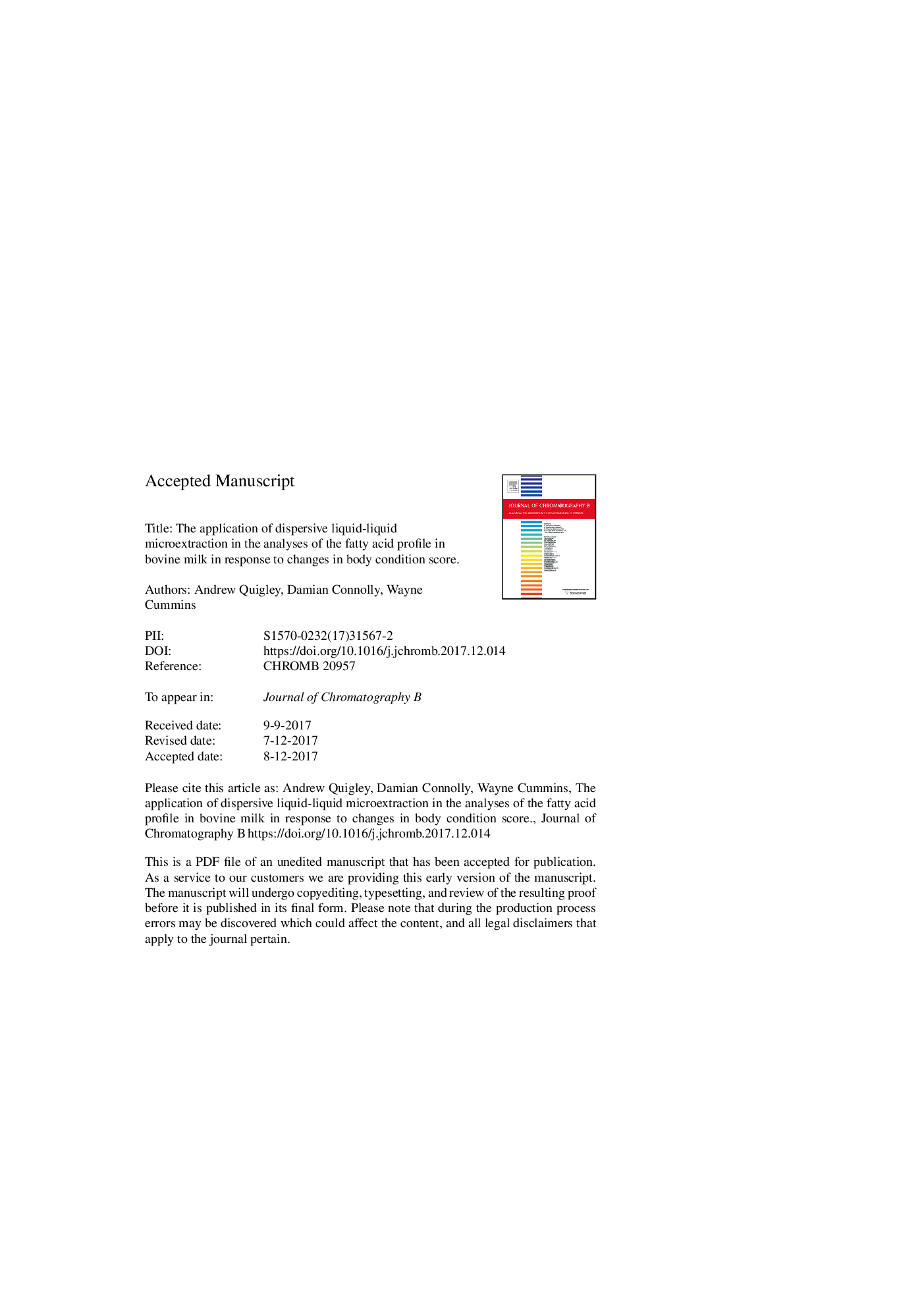| Article ID | Journal | Published Year | Pages | File Type |
|---|---|---|---|---|
| 7615519 | Journal of Chromatography B | 2018 | 16 Pages |
Abstract
Dispersive liquid-liquid microextraction (DLLME) was used prior to gas chromatography flame ionization detection (GC-FID) for the extraction of five fatty acids from milk taken from cows with different body condition scores. Optimum extraction conditions were: 300â¯Î¼L of chloroform (extraction solvent), and 1â¯mL methanol (dispersive solvent). The procedure was optimised using Design of Experiments (DoE). The analytes were separated on a GC capillary column containing a polyethylene glycol stationary phase (15â¯mâ¯Ãâ¯0.53â¯mmâ¯Ãâ¯1.2â¯Î¼m). Enrichment factors were in the range of 8-15 and limit of detection (LOD) was 0.04â¯Î¼g/mL. Calibration graphs showed good linearity with coefficients of determination higher than 0.994% and relative standard deviations lower than 7%. This method provided a simple and rapid derivatisation and extraction method for the determination of fatty acids in bovine milk. It showed that there was a significant difference in the palmitic acid content of milk from cows that had an optimum body condition score (10.85â¯mg/mL) compared to cows that had a high body condition score (5.73â¯mg/mL).
Related Topics
Physical Sciences and Engineering
Chemistry
Analytical Chemistry
Authors
Andrew Quigley, Damian Connolly, Wayne Cummins,
